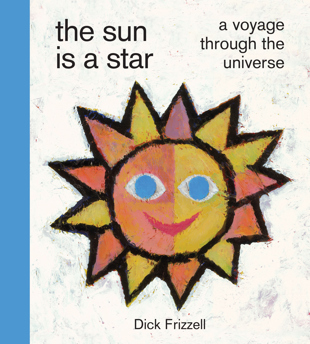Q1: After working your way through the history of Western art for your last book, was it a relief to look up at the sun and the stars?
Not so much a relief as a joy to be able to go on writing and thinking. And in territory in which I felt a wee bit more secure.
Q2: As the book notes, you’ve had a lifetime interest in space, the stars, the sun . . . in your experience, is that pretty unusual amongst people you meet?
Yes, it is, but I’m constantly surprised at how often I see it crop up in the writing of others. Saul Bellow, for example, who must’ve really soaked it up. And there I am, comparing myself to Saul Bellow, ha ha.
Q3: What are people who don’t turn their eyes skywards and don’t know their Black Holes from their White Dwarves missing out on?
Well . . . they’re missing out on the big picture, the true meaning of ‘life’. One thing that irritates me is people who take a bit of a look ‘out’ and and start gushing about the ‘awesomeness of our insignificance’. Which rather misses the point about the miracle of us being here to look out at all!
Q4: Hence this book?
Totally. Get a grip you guys — we are profoundly significant!
Q5: Once you start to dig into it, the concepts of time and expanding universes and universal consciousness all quickly become pretty metaphysical. It’s a good brain workout. Is that part of the attraction for you?
Very much so. I certainly don’t profess to understand it all, but i think I’ve developed a pretty good sense of how it all works.
Q6: The book also makes it clear that you feel some solace in our being a part of this vast cosmic enterprise. We are both nothing and also integral to it at the same time. Does that feel kinda spiritual?
Funnily enough it does! I’m writing this the day before my friend Fane Flaws’ funeral and I know that he believed profoundly that he was moving to a spiritual dimension, which I believe is faintly ridiculous, except that I also believe that, ultimately, as we colonise and measure very last atom in the Universe, we will all be pure information. Which sounds like pretty much the same thing, and Fane will already be there waiting for me with that ‘told you so’ look on his face.
Q7: You’re clearly very well-read in this area. What are your regular go-to books, authors and websites for the latest information?
The first book to introduce me to this concept of the ‘Authorial Universe’ was Frank Tippler with his amazing, and crazy, book The Physics of Immortality. Other authors are Brian Greene, Richard Dawkins, Paul Davies, John Gribben, Martin Reece, Simon Singh . . . so many! Oh, and the website Quora Digest has been a big help.
Q8: Tell us about getting all the artists who’ve contributed works to the book on board?
I very early on realised that doing it all myself was going to be a big ask so I started recruiting ‘outside help’ and then that quickly turned into the ‘big idea’ of talking friends and family into doing the whole damn thing!
Q9: What was the reason for that rather than illustrating it all yourself?
See above. But I tried, as much as possible, to steer the book away from being just another New Zealand art book, hence the deliberate mix of art genres: street art, folk art, fine art, graphic art, etcetera.
Q10: Do you think that little Coco Frizzell, who seeded the idea for this book, would be pleased with the outcome?
I have it on good authority that little Coco, who is now very much grown-up Coco, is dead chuffed about the whole thing!


